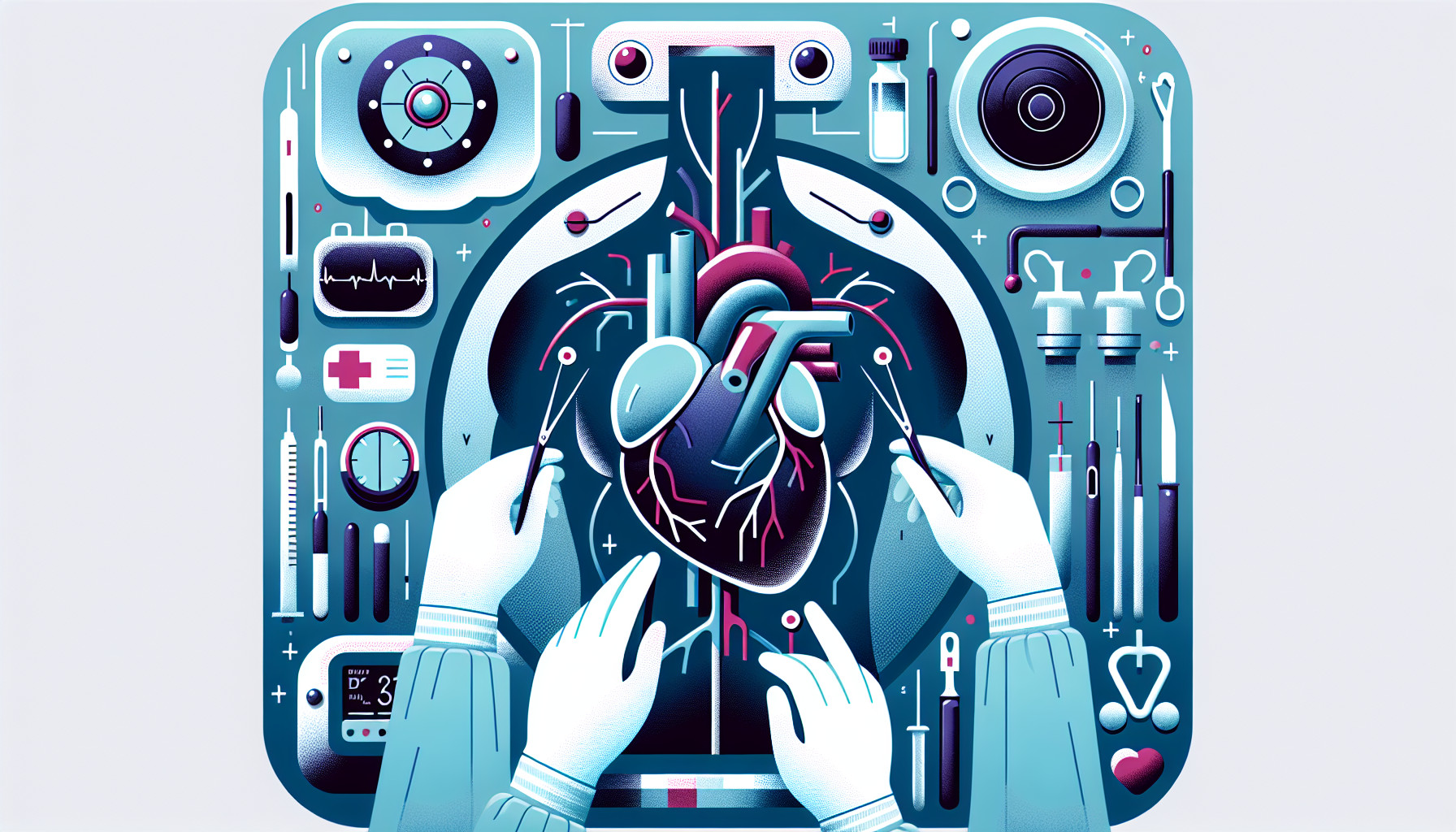Our Summary
This research paper reviews recent studies on the use of two internal thoracic arteries (BITA) in heart bypass surgery. Results from a trial (ART) showed that using two arteries wasn’t necessarily better than using just one. The authors of this paper caution that using two arteries might not be suitable for all patients, especially considering the findings of the ART trial. However, it may be beneficial for younger patients and those without additional health conditions like diabetes, obesity, lung disease, previous chest radiation, long-term steroid use, or older women. The researchers conclude that more long-term studies are needed to confirm whether using two arteries in heart bypass surgery is more beneficial.
FAQs
- What did the ART trial reveal about the use of two internal thoracic arteries in heart bypass surgery?
- Who are the patients that might benefit from the use of two arteries in heart bypass surgery?
- Why do the researchers suggest that more long-term studies are needed on the use of two internal thoracic arteries in heart bypass surgery?
Doctor’s Tip
One tip a doctor might give a patient about coronary artery bypass is to discuss with them the potential benefits and risks of using two internal thoracic arteries (BITA) in the surgery. It is important for the patient to understand that while using two arteries may have some advantages, it may not be suitable for all individuals and could potentially increase the risk of complications in certain cases. Therefore, it is crucial for the patient to have a thorough discussion with their healthcare provider to determine the best course of action for their specific situation.
Suitable For
Patients who are typically recommended for coronary artery bypass surgery include those with severe coronary artery disease, blockages in multiple coronary arteries, previous heart attacks, angina that cannot be controlled with medication, and those at high risk for complications from other surgical procedures. Additionally, patients with diabetes, a history of smoking, or a family history of heart disease may also be recommended for coronary artery bypass surgery. Ultimately, the decision to undergo bypass surgery is made on a case-by-case basis by a team of healthcare providers based on the individual patient’s medical history and specific needs.
Timeline
Before coronary artery bypass surgery, a patient may experience symptoms of coronary artery disease such as chest pain, shortness of breath, fatigue, and heart palpitations. They may undergo diagnostic tests such as an electrocardiogram (ECG), stress test, echocardiogram, or coronary angiography to confirm the presence of blockages in the coronary arteries.
After the decision is made to proceed with coronary artery bypass surgery, the patient will undergo preoperative assessment and preparation, which may include blood tests, imaging studies, and consultation with a cardiologist and anesthesiologist. The patient will also receive instructions on how to prepare for surgery, including fasting and medication management.
During the surgery, the patient will be placed under general anesthesia, and the surgeon will make an incision in the chest to access the heart and coronary arteries. The surgeon will then harvest one or more healthy blood vessels from another part of the body, such as the leg or chest wall, to use as grafts to create new pathways for blood flow around the blocked coronary arteries. The surgeon will then perform the bypass procedure, attaching the grafts to the coronary arteries to restore blood flow to the heart muscle.
After the surgery, the patient will be closely monitored in the intensive care unit (ICU) or a cardiac care unit (CCU) for a period of time to ensure their stability and recovery. The patient will receive pain medication, antibiotics, and other medications as needed, as well as physical therapy and breathing exercises to aid in recovery. The patient will also receive instructions on postoperative care, including wound care, medication management, activity restrictions, and follow-up appointments with their healthcare providers.
Overall, the timeline of a patient’s experience before and after coronary artery bypass surgery involves preoperative assessment and preparation, the surgical procedure itself, and postoperative monitoring and recovery to ensure a successful outcome and long-term cardiovascular health.
What to Ask Your Doctor
- What are the potential benefits of using two internal thoracic arteries (BITA) in coronary artery bypass surgery compared to using just one artery?
- Are there any specific criteria or factors that make a patient a good candidate for using two arteries in bypass surgery?
- What are the potential risks or complications associated with using two arteries in bypass surgery?
- How does using two arteries in bypass surgery impact the long-term outcomes and success of the procedure?
- Are there any specific considerations or precautions that need to be taken for patients with additional health conditions, such as diabetes, obesity, lung disease, previous chest radiation, long-term steroid use, or older women, when considering using two arteries in bypass surgery?
- What are the potential limitations or challenges in using two arteries in bypass surgery that patients should be aware of?
- Are there any alternative surgical options or approaches that should be considered in addition to using two arteries in bypass surgery?
- Will using two arteries in bypass surgery require any additional monitoring or follow-up care compared to using just one artery?
- What are the current recommendations or guidelines for using two arteries in bypass surgery, and how do they relate to the findings of the ART trial mentioned in the research paper?
- Are there any ongoing clinical trials or research studies investigating the use of two arteries in bypass surgery that patients should be aware of?
Reference
Authors: Sef D, Raja SG. Journal: Int J Surg. 2021 Feb;86:1-4. doi: 10.1016/j.ijsu.2020.12.007. Epub 2020 Dec 31. PMID: 33388437
